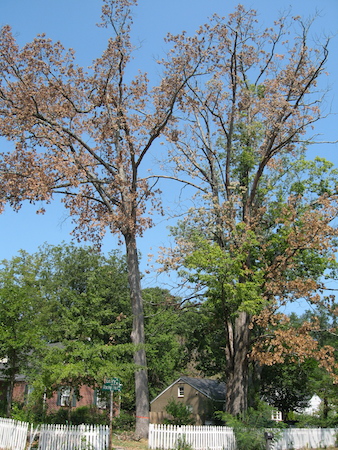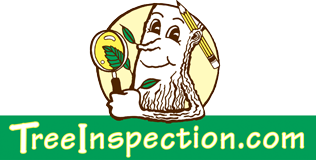Opening page for general questions and concerns
 Good grief! Here's a "no-brainer." These two dead oaks should be removed immediately!Dead trees usually create problems. They drop branches and eventually fall over. And usually there is no way to predict when any of this will happen.
Good grief! Here's a "no-brainer." These two dead oaks should be removed immediately!Dead trees usually create problems. They drop branches and eventually fall over. And usually there is no way to predict when any of this will happen.
But rather than removing a dead tree, sometimes you can leave it standing and let nature take its course. Here are some things to consider.
- Is the tree near or leaning over a structure such as a house or shed? If so, remove it.
- Is the tree in an area that gets lots of use, like a parking lot or playground? Here, too, remove it.
- Is the tree far enough away so it won't damage anything if it falls? If so, think about leaving it for wildlife habitat. Dead trees become nesting areas for many species of birds and other animals.
If you know that you need to remove a dead tree, it's best to do it sooner rather than later, for these reasons:
- The longer a dead tree remains standing, the more dangerous it becomes. Dead trees break more easily, so they are more likely to drop branches or come down without warning.
- A dead tree which has become brittle is often more dangerous to take down, which can make the removal job riskier for the tree workers and more expensive for you.
There are many conditions that can cause a tree's leaves to drop off at the wrong time of year. Fungal and bacterial diseases, insect attack, and excessive moisture are just a few.
To find out what's going on, start by calling a Certified Arborist for a tree inspection. If the problem affects only the leaves, the arborist may recognize it immediately. If not, he may have to get a leaf sample sent to a laboratory for analysis. (Many county extension agents can help with this.) In some cases, leaf problems are a symptom that the entire tree is sick.
